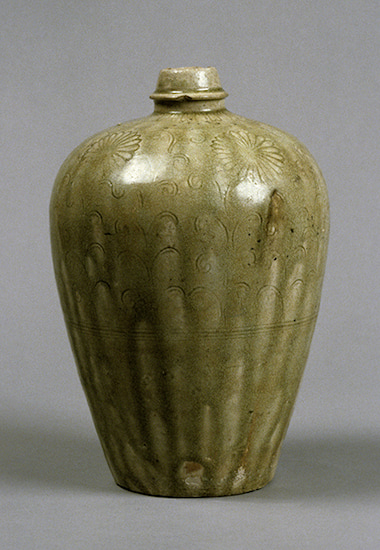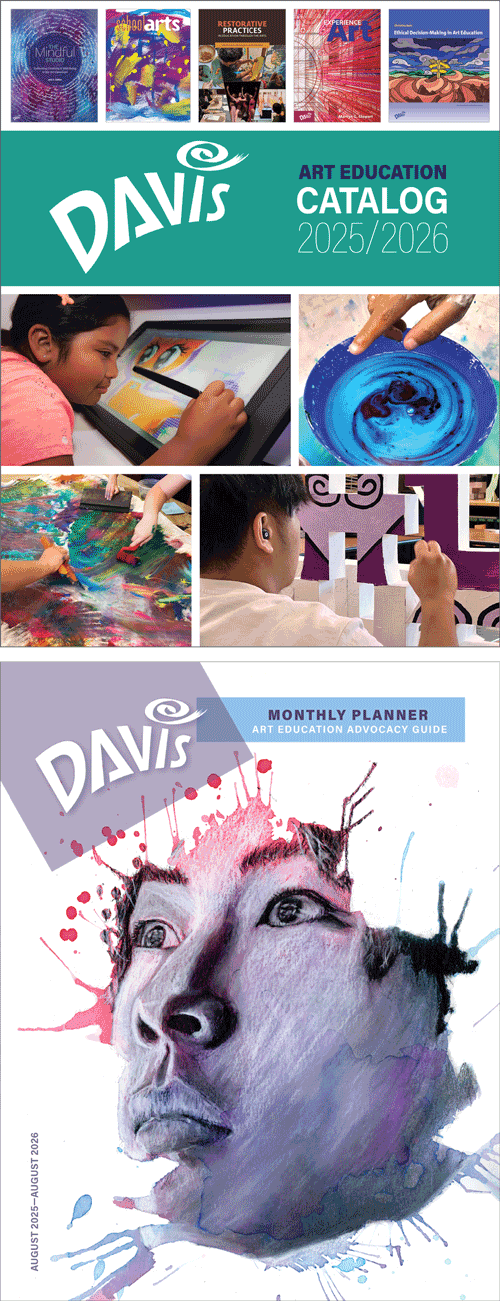Gem of the Month: Seto Ware
Let’s welcome the coming month of July with a gorgeous example of ceramics from Japan. Japanese ceramics have an incredibly long history and tradition of excellence. This tradition dates back to the Jomon culture (ca. 3000–200 BCE), which produced some of the earliest ceramic vessels that were decorated for decoration’s sake. That excellence has persisted in Japanese ceramics to the present day.
 |
| Japan, Kamakura Period (1185–1333), Wine flask, ca. 1300. Seto stoneware, 9 15/16" x 6 11/16" (25.3 x 17 cm). © 2025 Cleveland Museum of Art. (CL-281) |
Seto ware from the Kamakura period (1185–1333) is called "Old Seto" or koseto. Old Seto was typically coated in an ash glaze with the mineral feldspar, which produced a yellow or greenish-gray glaze. Placing ashes on top of a vessel during firing produces a "spontaneous," "accidental" unevenness, which was prized for its spirit of Zen Buddhism. The neck of this jar is decorated with incised chrysanthemum blossoms and incised stylized leaf lines. The chrysanthemum is a symbol not only of Japan (symbolizing the rising sun), but also of the emperor.
Seto ware is named for the city in which the kiln is located in Aichi prefecture. It was produced at what has been called the Six Ancient Kilns. The region produced stoneware since the Heian period (ca. 794–1185 CE). At one time, more than 500 kilns produced various types of ceramic wares. Chinese-influenced wares such as Seto ware gradually replaced imported Chinese ceramics for everyday use in Japan.
The Kamakura period was dominated by the Kamakura family military dictatorship during Japan’s so-called “medieval” period. The provincial military families fought one another for control of the country. The Gempei Wars (1185–1192) witnessed the victory of the samurai-supported clans over the emperor’s court. The shogunate, a military dictatorship, would rule Japan until the mid-1800s. The respected emperor no longer had any real power.
Art flourished during the Kamakura period despite political turmoil. Zen Buddhism, with its emphasis on simplicity, spontaneity, and humility, had a great impact on art in Japan. This was especially the case for literature and ceramics. Zen Buddhism was introduced to Japan during the Kamakura period. This set of beliefs included meditation and rigorous self-denial. These practices were particularly appealing to the samurai (military) class.
The height of Seto stoneware was traditionally attributed to ceramic artist Katō Shirōzaemon (1168–1249). He had studied ceramics in China and Korea, bringing back a style reminiscent of the stoneware of the Song Dynasty (960–1279). This was considered to be one of the highpoints of Chinese stoneware, particularly in regard to glazes. Seto stoneware from the late Kamakura period on is characterized by a green-yellow or purple-brown glaze.
Correlations to Davis Programs: Explorations in Art 2E Kindergarten: Unit 4; Explorations in Art 2E Grade 2: 3.9; Explorations in Art 2E Grade 3: 6.7; Explorations in Art 2E Grade 4: 4.9; Explorations in Art 2E Grade 5: 5.9; Explorations in Art 2E Grade 6: 4.5; Exploring Visual Design 4E: p. 129; The Visual Experience 4E: 10.10; Experience Clay 3E: p. 70, Chapter 6, p. 253

Comments